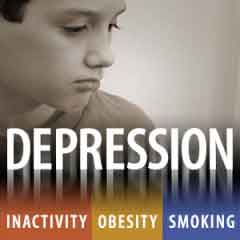Suicide Risk Doesn’t Differ in Children Taking Two Types of Commonly Prescribed Antidepressants
 A Vanderbilt University Medical Center study shows there is no evidence that the risk of suicide differs with two commonly prescribed antidepressants prescribed to children and adolescents.
A Vanderbilt University Medical Center study shows there is no evidence that the risk of suicide differs with two commonly prescribed antidepressants prescribed to children and adolescents.
The population-based study, published today in the journal Pediatrics, tracked children and adolescents who recently began taking selective serotonin reuptake inhibitors (SSRIs) and serotonin-norepinephrine reuptake inhibitors (SNRIs).
For the past decade parents and health care professionals have worried that children and adolescents treated with antidepressant medications might be at increased risk of suicidal thoughts or behavior.
In 2004 The U.S. Food and Drug Administration (FDA) and the UK Medicine Healthcare Products Regulatory Agency issued public warnings about the increased risk of suicidal thoughts or behavior in children and adolescents treated with certain antidepressant medications, and required that a boxed “black box” warning be added to package inserts for antidepressants.
Because antidepressants differ in their characteristics, including effects on neurotransmitters, it has also been believed that the risk of suicidal behavior for individual medications might differ.
“It is important to study this group of children and adolescents because many children are treated with these medications in the U.S. each year and we need to understand the differential risks for suicide attempts and completed suicides,” said study author William Cooper, M.D., MPH, Cornelius Vanderbilt Professor of Pediatrics and professor of Health Policy.
SSRIs, like fluoxetine, are the most widely used antidepressants/antianxiety drugs, slowing down the rate at which serotonin, an important signaling molecule in the brain, is broken down. An SNRI, like sertraline, is a newer type of antidepressant that does the same thing for another important chemical, noradrenaline, as well as serotonin.
Major depressive disorder (MDD) is common in children and adolescents and has significant negative impacts on children’s development, functioning and risk for suicide, Cooper said. According to the American Academy of Child and Adolescent Psychiatry, suicide is the third leading cause of death for 15-24 year olds and the sixth leading cause of death for 5-14 year olds.
The Vanderbilt study reviewed the medical records of 36,842 children 6 to 18 years old enrolled in Medicaid between 1995 and 2006 who were new users of one of the antidepressant medications of interest. Of those studied 415 had a medically treated suicide attempt, including four who completed suicide.
Of those included in the study, 47.4 percent had a diagnosis of MDD and one-fourth had a diagnosis of attention-deficit/hyperactivity disorder. Other common psychiatric conditions among the cohort members included conduct disorder and anxiety.
The study was not designed to compare the risk for suicide attempts for antidepressant users compared with non-users.
“These findings provide important information about the relative risks of the more recently approved antidepressants to help guide decision making by patients, their families and their providers,” Cooper said. “But more research is needed to understand other safety aspects of medications used to treat children so that families and providers can make informed decisions.”
Source Newsroom: Vanderbilt University Medical Center
Pediatrics

